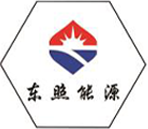
Nov . 06, 2024 08:54
Back to list
pressure reducer
Understanding Pressure Reducers Key Components for Fluid Control
A pressure reducer, also known as a pressure regulator, plays a crucial role in fluid control systems, ensuring that the pressure of gases or liquids is consistently maintained at a desired level. This device is essential in various applications, from industrial machinery and HVAC systems to household gas supply and medical equipment.
The primary function of a pressure reducer is to take a high-pressure input and provide a steady, lower output pressure. This capability is vital for protecting sensitive equipment and ensuring optimal performance of systems that rely on precise pressure levels. By controlling pressure fluctuations, pressure reducers help prevent potential damage caused by overpressure while also improving the efficiency of operations.
Pressure reducers operate based on a simple yet effective principle. They typically consist of a spring-loaded diaphragm or piston mechanism that adjusts the flow of the medium based on the pressure differential. When the inlet pressure rises above the set point, the diaphragm moves to throttle the flow, thereby reducing the output pressure. Conversely, if the pressure drops, the diaphragm allows more flow to maintain the desired level. This dynamic adjustment is crucial in applications where fluctuations can lead to safety concerns or equipment failure.
pressure reducer

There are several types of pressure reducers, each tailored for specific applications. For instance, low-pressure regulators are commonly used in residential gas lines to maintain safe operating pressures for appliances. In contrast, high-pressure regulators are utilized in industrial settings, where they manage the pressure of gases in processes that require precise control.
Selecting the right pressure reducer involves considering factors such as the type of fluid, the pressure range, and the required flow rate. Additionally, materials and construction must be compatible with the fluid being regulated to prevent corrosion or contamination. Regular maintenance and testing of pressure reducers are also important to ensure their reliability and efficiency, especially in critical applications.
In conclusion, pressure reducers are indispensable components of fluid control systems across various industries. Their ability to maintain stable pressure levels enhances safety, efficiency, and performance, making them vital for both industrial and residential applications. Understanding their operation, types, and selection criteria is essential for anyone looking to implement or maintain fluid control systems effectively. As technology continues to evolve, the development of more sophisticated pressure reducing solutions will undoubtedly play a significant role in the advancement of fluid management practices.
Latest news
-
Safety Valve Spring-Loaded Design Overpressure ProtectionNewsJul.25,2025
-
Precision Voltage Regulator AC5 Accuracy Grade PerformanceNewsJul.25,2025
-
Natural Gas Pressure Regulating Skid Industrial Pipeline ApplicationsNewsJul.25,2025
-
Natural Gas Filter Stainless Steel Mesh Element DesignNewsJul.25,2025
-
Gas Pressure Regulator Valve Direct-Acting Spring-Loaded DesignNewsJul.25,2025
-
Decompression Equipment Multi-Stage Heat Exchange System DesignNewsJul.25,2025

